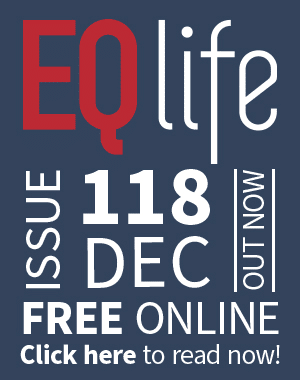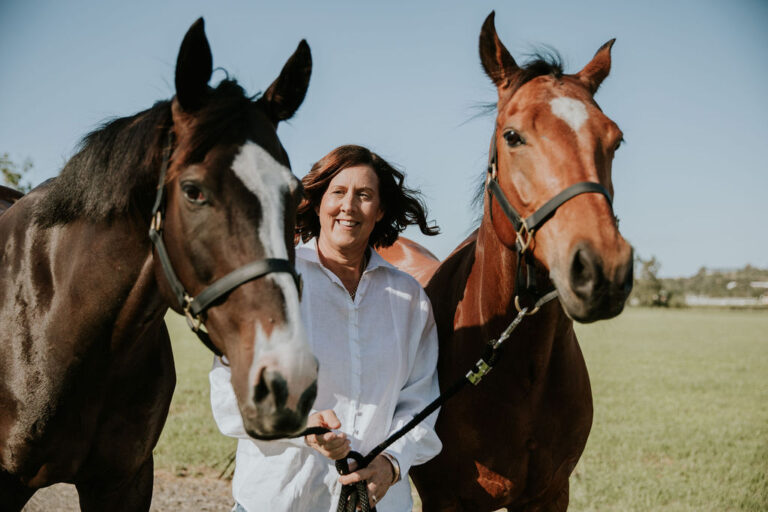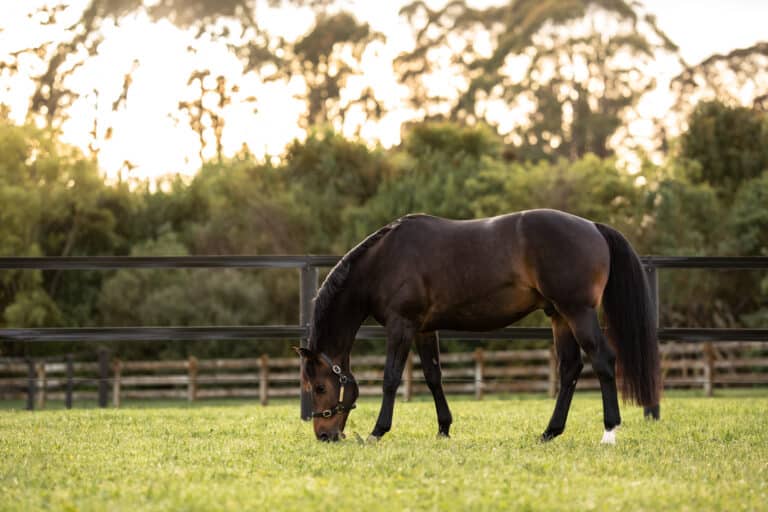This article first appeared in a previous issue of Equestrian Life magazine. To read the current digital issue, click here.
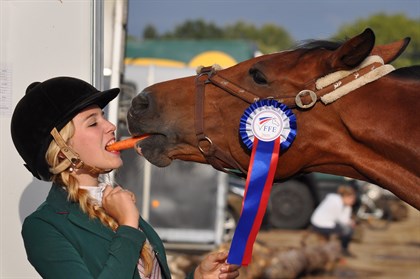
In this article we will examine the basics to start to develop a feeding program for the performance horse.
Written by David Nash
Feeding your performance horse can be quite a challenge as there are many factors to consider. Size, weight, metabolism, work load, temperament, condition, environment, grazing type and availability and nutritional disorders and complications are just a few factors we need to consider when developing diets for performance horses. Thus the theory of the one size fits all does not work.
In this article we will examine the basics to start to develop a feeding program for the performance horse by getting back to basics of your horse.
Knowing your Horse
First of all, “Know your Horse”. This means knowing their weight, height, condition, metabolism, workload and if they have any nutritional or metabolic problems such as laminitis or EMS (Equine Metabolic Syndrome). If you do not know your horses’ details I would suggest first measuring your horses’ height and weight. If you do not have access to scales which are the most accurate, weight tapes are a reasonable alternative. There are also equations that if your measure your heart girth and the horses length (point of shoulder to point of buttock), you can estimate your horses weight.
Equation for estimating the weight of your horse.
This is a relatively accurate but actually weighing them with scales is ideal. Once we have obtained the horses weight we need to ascertain what the “Condition Score” of our horse is. For performance horses we would like them to be moderate to moderate fleshy. A link to a “Body Condition Scoring” chart is provided here.
Now we can ascertain whether we need to increase or decrease the condition of our horse.
The metabolism of your horse will help assist with calculating the energy “calories” your horse needs. You will have heard the expression of good and poor doers. If your horse is a “good doer” this will mean they will convert energy more efficiently than other horses and hence will need less energy in their diet to maintain their condition and vice versa for ‘poor doers’. A good example of “good doers” would be Warmbloods and Quarter Horses where some Thoroughbred may be classed as “poor doers”. Establishing the horses’ metabolic capacity is extremely important for determining what type of feed you feed to your horse. Whilst a horse may not need the same calories as another horse their protein, vitamin and mineral levels will be extremely similar thus a feed with concentrated levels of protein vitamins and mineral will be require to ensure the horses nutritional requirements are met.
The work load of the horse needs to be determined to accurately gauge the horses energy requirement. A quick example would be that a horse in light work will need 1.25 times the energy of a sedentary horse and 1.5 times the energy for a horse in medium work. Generally horses in intense work will require twice as much energy as a horse not in work.
Now that we have this information we can calculate the energy and nutrient requirements for the horse. You can either consult your nutritionist to calculate this or there are online software programs you can use. Click here to view one.
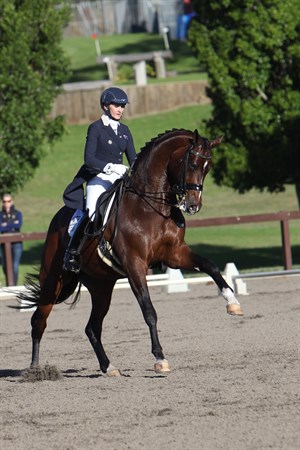
Maree Tomkinson and Diamantina.
© Roger Fitzhardinge
Know Your Environment
Once we have established what our healthy horse requires we can now look at the horses surrounding environment and what is available to you and your horse.
When formulating a diet we need to consider what access the horse has to pasture, for how long and what type of pasture is it. A horse can consume up to 3% of its bodyweight in Dry Matter pasture per day. Recent studies showed that ponies that were only given 3 hours access to pasture per day quickly learnt to eat up to 2% of their bodyweight in that period of time. These types or horses that gorge themselves will need to be closely monitored to ensure they do not get obese and potentially suffer from bouts of laminitis.
What forage we choose also has an impact on what we feed our horses. Pastures and Hays such as improved perennial ryegrasses, lucerne and clover are generally high in protein whereas annual pastures and cereal hays are lower in protein. Selecting the right forage for your horse will assist you in providing the right nutrition for your horse and will help save you money.
Generally young and developing horses and mares in mid to late pregnancy and lactation require higher protein diets and mature horses with are not in work or light to medium work will require only lower to medium protein forage sources.
A good idea would be to have your pasture analysed to know what you are feeding. The nutrient analysis of pasture will change during the season so adjustments to your supplementary feed may need to occur if horses are at pasture most of the day. During spring you may need only to provide a vitamin and mineral supplement to your horse as spring pasture is generally higher in energy and protein whereas in summer you need to supplement your horse with supplementary feed as the pasture is low in nutrient value when it has dried off.
If you are not able to have your pasture analysed your local Department of Primary Industries extension officer will be able to give you a basic idea of what your pasture value is. Also a simple guide is a grab test. If your pasture or hay is soft to grab it is generally going to be of good nutritional value. If it is hard to grab then it will be of low nutrient value. This is due to the fact that the forage is high in lignin which is a structural fibre and is indigestible to horses thus providing little nutritional value.
Now that we have ascertained what our horse needs and what feed sources are naturally available to our horse on our property we can assess what we need to supplement our horses’ diet.
Nutrients
The key nutrients we will discuss are Water, Carbohydrates, Fats, Fibre, Minerals and Vitamins.
Water is the key and most limiting nutrient. Like us horses are made up of over 70% water. Horses will die of dehydration before they will die of starvation. An average 500kg horse requires 20-30l per day in no to light work in moderate weather conditions. However, this can increase to 70-80L per day when in hot / humid conditions and or intense workloads. It is important to note that horses suffering from slight dehydration will have altered electrolyte balances that can affect their ability to perform, react and recover. We will discuss this later with regards to electrolyte supplementation.
Fibre is the most important energy source for performance horses. Remember, the horses digestive system has evolved around digesting fibre as its main source of energy. Whilst fibre is present in most ingredients we feed our horses our high fibre ingredients are our pastures / hay and some novel ingredients such as legume hulls and beet pulp. The nutrient Fibre consists of several forms that are digestible to the horses in various capacities. The main ones we will see are Cellulose, Hemicellulose, Lignin and some not so common ones such as Pectin. A very basic approach is that Cellulose and Hemicellulose are broken down by the horse in the large intestine to Volatile Fatty Acids which are then eventually converted in the body’s cells to energy. Lignin is totally indigestible to the horse. An example is a lush ryegrass pasture will be high in digestible fibres and will be soft to your touch. Lignin is a structural fibre so will be hard or sharp when you grab it. An example of this is straw. As a result a quick and simple quality check will be a ‘grab’ sample. If the fibre source is soft it is potentially well digestible if it is hard it will be poorly digested.
A main proportion of a performance horses diet can be derived from fibre based products. This may range from 1.5-2.0% of the horses bodyweight per day. This amount will vary depending upon horse, workload and metabolism. For most of our horses for Dressage, Showjumping and Showing a higher proportion of the diet should be fibre based with additional energy coming from Fats and Carbohydrates.
Fats as a nutrient source have become more evident in equine diets over the last decade or so. Fats play many important roles in some metabolic pathways. As a nutrient we have focussed on fat as an energy source for horses. Horses digest vegetable based fats quite efficiently. Fats are very high in energy. For example Vegetable Oil may have 36-38 MJ/kg of Energy where as Oats may have 12Mj/kg of energy and average pasture hay may have 8MJ/Kg of energy. For performance horses fats are a good source of ‘calm’ energy as they do not produce an insulin response like carbohydrates (grains) do. This will reduce the ‘sugar rush’ which can affect the performance of horses that are on high grain (carbohydrate) diets. If you are looking to reduce your grain intake on your performance horse a general rule of thumb would be 300ml of vegetable oil can replace 1kg of grain. Remember if the grain portion of your horses diet if a commercially formulated feed changing the amount you feed may affect the nutrient ratios in your horses total diet and the effectiveness of the diet. Consult your nutritionist to ensure your diet changes are still meeting all nutrient requirements.
Omega essential fatty acid levels in fats has caused much discussion in equine diets. Most of us will have heard Omega 3, 6 and 9. These occur in various ratios in our feed ingredients. Cereal grains are naturally high in Omega 6 whereas canola and flax learn more towards Omega 3. It is thought that a diet with a higher proportion on Omega 3 in it will assist with reducing the pro-inflammation effects of prostroglandin in the horses joints.
Carbohydrates are often seen as the enemy in human nutrition and also in equine nutrition. They do not necessarily need to be banished from our diets. Cereal grains such as Oats, Barley and Corn are high in carbohydrates’ and whilst not as energy dense as fat are a lot higher in energy than poorer quality pastures. For performance horses the overfeeding of carbohydrates / grains can result in an overload of the digestive tract resulting in health problems such as acidosis and laminitis but also poor performances and if unchecked metabolic disorders such as Obesity of EMS (equine metabolic syndrome). Management of feeding carbohydrates is the key to optimum performance. Feed small amounts frequently. This gives the horses digestive tract enough time to digest the feed and reduce negative impacts associated with overloading the digestive tract. I would suggest feeding no more than 2kg of grain per feed.
Use processed grains such as steam flaked, extruded and or micronized. These grains are more readily available to the horse so they are digested more in the small intestine. hus reducing the risk of overloading the horses’ large intestine where the fibre portion of the diet is digested.
Many lower intensity exercised horse may not need grain / carbohydrates added to their diet, they may be able to meet their nutrient requirements from pasture / hay and a small amount of supplementary feeding such as a vitamin and mineral supplement and salt. As the intensity increases such as FEI standard dressage, showjumping and eventing, supplementation for energy etc will be required as generally pasture will not be able to provide sufficient nutrients to enable to horse to perform and just as importantly recover from exercise.
Protein is frequently confused for energy. Proteins are often referred to the building blocks of the body. They are involved in many metabolic pathways in the body as well as contribute the growth, development and repair of muscle cells and organs. Proteins are made up of amino acids. These are then broken up into essential and non essential amino acids. The horse can generate non essential amino acids however essential amino acids must be provided in the horses diet. As you can derive a higher quality protein ingredient will be higher in essential amino acids. In equine diets the main two amino acids we will look for are lysine and methionine.
Nutritionists will refer to these as limiting amino acids. These will be the most used amino acids for producing different proteins for the body. If we do not have enough of these limiting amino acids the horse will not be able to make the desired protein. Soybean Meal, Canola Meal are high in essential amino acids where as products like Copra are lower in essential amino acids. Another benefit from feeding quality amino acids is that the body will deposit this as muscle or ‘topline’. Poorer quality protein sources will not be able to generate as much muscle and will eventually deposit more fat as a result. For performance horses we are looking for a muscular horse to perform their manoeuvres at an optimum level
Horses in growth and development stages such as young horses or lactating mares will require higher protein diets (14-16% of total diet). Mature horses, idle or on light work will require a lower protein diets (10%). Performance horses that are performing at high levels will need an increased level of high quality protein to assist in the recovery of muscles from previous performances.
Written in conjunction with Barastoc.
READ THE LATEST NEWS ARTICLES HERE






